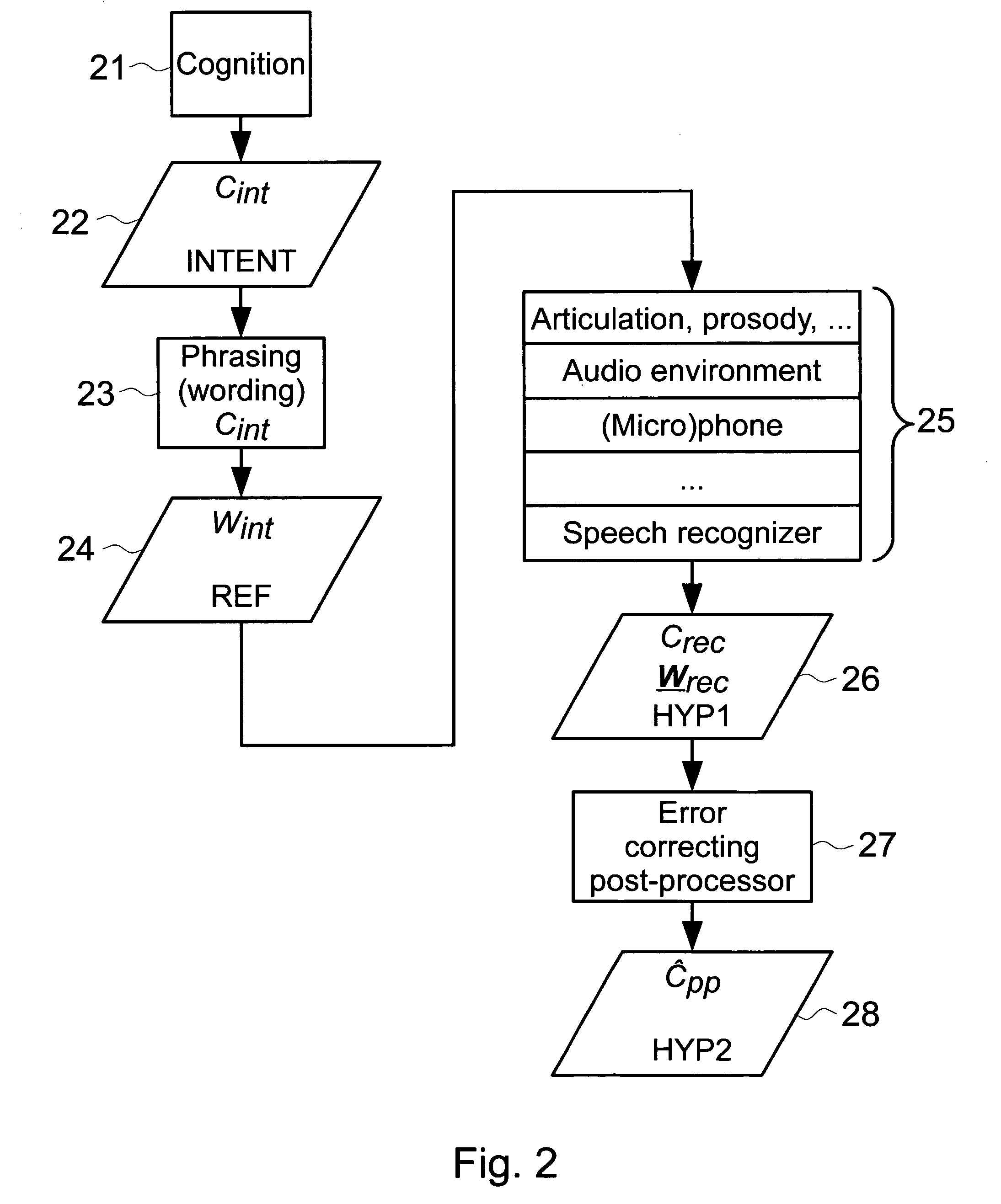Method and system for post-processing speech recognition results
a speech recognition and post-processing technology, applied in speech analysis, speech recognition, instruments, etc., can solve the problems of time-consuming, expensive and error-prone process of transcribing, and achieve the effect of maximizing the a-posteriori probability of the intended semantic concept and minimizing the error rate of semantic interpretation recognition
- Summary
- Abstract
- Description
- Claims
- Application Information
AI Technical Summary
Benefits of technology
Problems solved by technology
Method used
Image
Examples
Embodiment Construction
[0020]FIG. 1 shows a generic Automatic Speech Recognition (ASR) setup where an ASR engine 1 uses grammar 3 to recognize spoken utterance 2. The result of the recognition may be either a sequence of words Wrec 4, or a combination of a Wrec and a semantic interpretation Crec 5. Generally, recognized Wrec 4 or Wrec & Crec 5 will not always correspond to the content of the original utterance 2 due to recognition errors.
[0021]FIG. 2 shows the principles behind the idea of correcting the semantic interpretation returned by a speech recognition system. A speaker thinks 21 about some concept Cint 22 and then speaks 23 word or words Wint 24 that identify that concept (subscript “int” stands for “intended”). Words can be articulated in a variety of ways, with various prosody, and so on. These spoken words together with any background noise are then captured by a microphone. A microphone may have its own specific characteristics as far as the sound capture is concerned. The sound then is digit...
PUM
 Login to View More
Login to View More Abstract
Description
Claims
Application Information
 Login to View More
Login to View More - R&D
- Intellectual Property
- Life Sciences
- Materials
- Tech Scout
- Unparalleled Data Quality
- Higher Quality Content
- 60% Fewer Hallucinations
Browse by: Latest US Patents, China's latest patents, Technical Efficacy Thesaurus, Application Domain, Technology Topic, Popular Technical Reports.
© 2025 PatSnap. All rights reserved.Legal|Privacy policy|Modern Slavery Act Transparency Statement|Sitemap|About US| Contact US: help@patsnap.com



